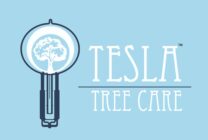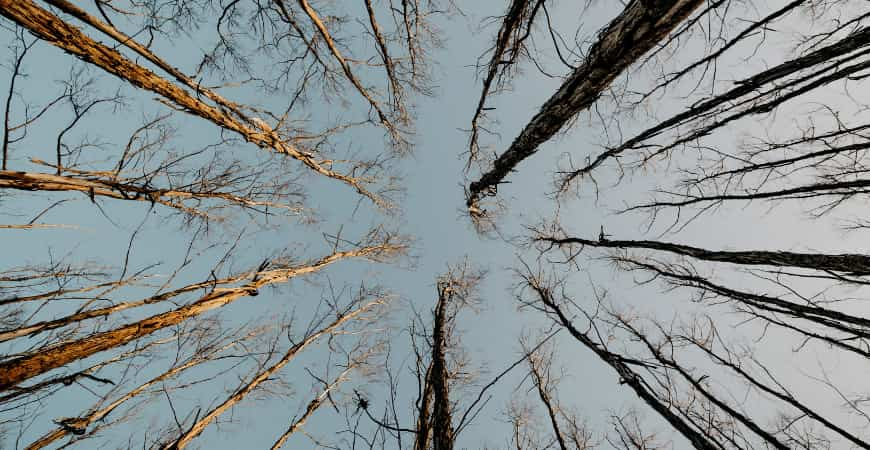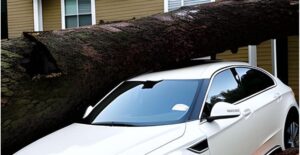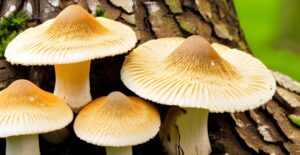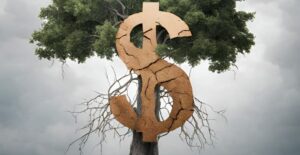Tree removal might sound like a drastic measure, but sometimes, it’s the best course of action to maintain the safety and aesthetics of your property. Recognizing the signs that your tree may need removal is essential for preventing potential damage or injury. Here are some crucial indicators that it’s time to call a professional tree removal service like Tesla Tree Care.
Visible Signs of Disease or Infection
When a tree’s health is compromised, it often displays telltale signs of disease or infection. The bark might exhibit unusual discolored patches or be peeling off in areas. Fungal growth, particularly at the tree’s base, suggests internal decay. Another concerning sign is when leaves turn yellow or brown outside of their usual shedding season or if they appear withered, spotted, or misshapen. Pest infestations, such as visible tunnels or holes in the bark, can also point to an underlying health issue. Any of these indicators warrant immediate attention. Consulting tree care experts like those at Tesla Tree Care can provide clarity on the severity of the problem and advise on necessary interventions.
Structural Damage
Structural damage in trees can range from superficial wounds to deep-seated cracks that compromise the tree’s stability. External indicators might include cracks or splits in the tree’s trunk, hollow areas, or sections where the bark is missing or peeling. Additionally, large limbs that hang lower than usual or appear detached can signify internal decay or stress points. A tree with structural damage poses a significant safety risk, especially during high winds, storms, or heavy snowfall, as weakened sections can break off without warning. Periodic assessment by professionals, like those at Tesla Tree Care, can identify and address these issues before they escalate.
Dead or Dying Branches
Dead or dying branches on a tree are not just unsightly; they pose potential risks to safety and can be indicative of larger health issues within the tree. When branches die, they lose their strength and structural integrity, becoming prone to falling during even mild weather conditions. Such branches can cause injury, property damage, or interfere with power lines. Additionally, the presence of numerous dead branches can suggest that the tree is not getting the necessary nutrients or that it’s suffering from a disease that could affect other trees in proximity. Regular inspection and timely action, like pruning by tree care experts, can mitigate these risks and promote overall tree health.
Sprouting at the Base
Sprouts or shoots emerging from the base of a tree, known as epicormic shoots, are more than just an aesthetic concern; they signify underlying stress or potential health issues within the tree. These vigorous growths often emerge as a tree’s response to severe damage, trauma, or environmental changes, acting as a survival mechanism to produce more leaves and generate essential energy. While some might dismiss these sprouts as mere nuisances, they can be telltale signs of significant root or trunk damage. It’s crucial to monitor trees displaying such growth patterns and consult tree care professionals to assess the overall health and determine the appropriate interventions.
Root Problems
The root system of a tree serves as its lifeline, drawing essential nutrients and water from the soil and providing a foundation for stability. However, many root issues remain hidden from sight, buried beneath the ground. Visible indicators, such as surface roots that appear broken, decayed, or lifted, often hint at more extensive underground problems. Compacted soil, typically resulting from heavy traffic or construction, can suffocate roots, leading to a tree’s decline. Additionally, fungi or pests targeting the root zone can compromise tree health. Trees with compromised root systems can become unstable, especially in adverse weather conditions, posing significant safety risks.
Unusual Growth Patterns
Trees, like all living organisms, adapt to their environment, which sometimes results in irregular growth patterns. A tree growing too close to structures might try to “reach out” for sunlight, resulting in lopsided growth. Trees with intertwined or ‘crossing’ branches can lead to self-damage due to friction. Additionally, excessive growth on one side or the other can indicate issues with light access or root health. Some trees might exhibit top-heavy growth or develop multiple trunks, which can compromise stability. Recognizing and addressing these atypical growth patterns early with professional tree care can prevent potential hazards and promote healthier tree development.
Recent Excavation Near the Tree
Excavation activities, whether for construction, landscaping, or utility installations, can significantly disrupt the delicate balance of a tree’s root system. Even if the tree itself appears untouched, the machinery and digging processes can compact the soil, sever crucial roots, or alter the water drainage patterns. This distress can hinder the tree’s ability to absorb nutrients and water, leading to long-term health issues. Trees might not manifest immediate symptoms, but the stress can accumulate over time, making them susceptible to diseases, pests, or structural instability. Thus, any recent digging or groundwork near a tree warrants a thorough assessment to determine its health and stability.
How Tesla Tree Care Can Assist
When faced with potential tree problems, turning to a reputable tree removal service is essential. Tesla Tree Care offers a comprehensive range of services tailored to meet the unique needs of each tree and its surroundings:
- Expert Diagnosis: At Tesla Tree Care, the health and vitality of your trees are of paramount importance. Our experienced team undergoes rigorous training to accurately diagnose various tree-related issues, from structural instabilities to hidden diseases. Leveraging state-of-the-art tools and a keen understanding of tree biology, we delve deep to identify the root cause of a tree’s distress. This meticulous diagnostic approach ensures that we can offer informed, tailored recommendations, allowing you to make decisions with clarity and confidence about the future of your green assets.
- Stump Grinding: Aesthetic and Safety Considerations** Following tree removal, the lingering stump can be both an eyesore and a potential hazard in your yard. Over time, these stumps can become breeding grounds for pests and fungi. Tesla Tree Care’s advanced stump grinding service tackles this issue head-on. Utilizing modern equipment and skilled techniques, we grind the stump below ground level, promoting a seamless lawn surface. This not only enhances your property’s visual appeal but also ensures a safer, obstacle-free environment for outdoor activities.
- Holistic Tree Care: At Tesla Tree Care, we believe in a comprehensive approach to tree health, going beyond mere removal. Our holistic tree care philosophy underscores the importance of nurturing every tree’s well-being. From regular trimming that promotes structured growth and averts potential hazards, to integrated pest management ensuring your trees remain robust against infestations, and proactive disease control measures that keep ailments at bay – we are committed to ensuring the longevity, beauty, and health of your trees, making them thrive in their natural environment.
Tesla Tree Care Offers Tree Removal & Tree Care
Your property’s trees provide shade, beauty, and ecological benefits. However, when they become a threat to safety or property integrity, it’s crucial to recognize the signs and take proactive measures. Always prioritize professional tree care to ensure the health and longevity of your trees and the safety of your surroundings. When in doubt, don’t hesitate to consult Tesla Tree Care, where expertise meets dedication in providing top-notch tree removal services and comprehensive tree care solutions.
